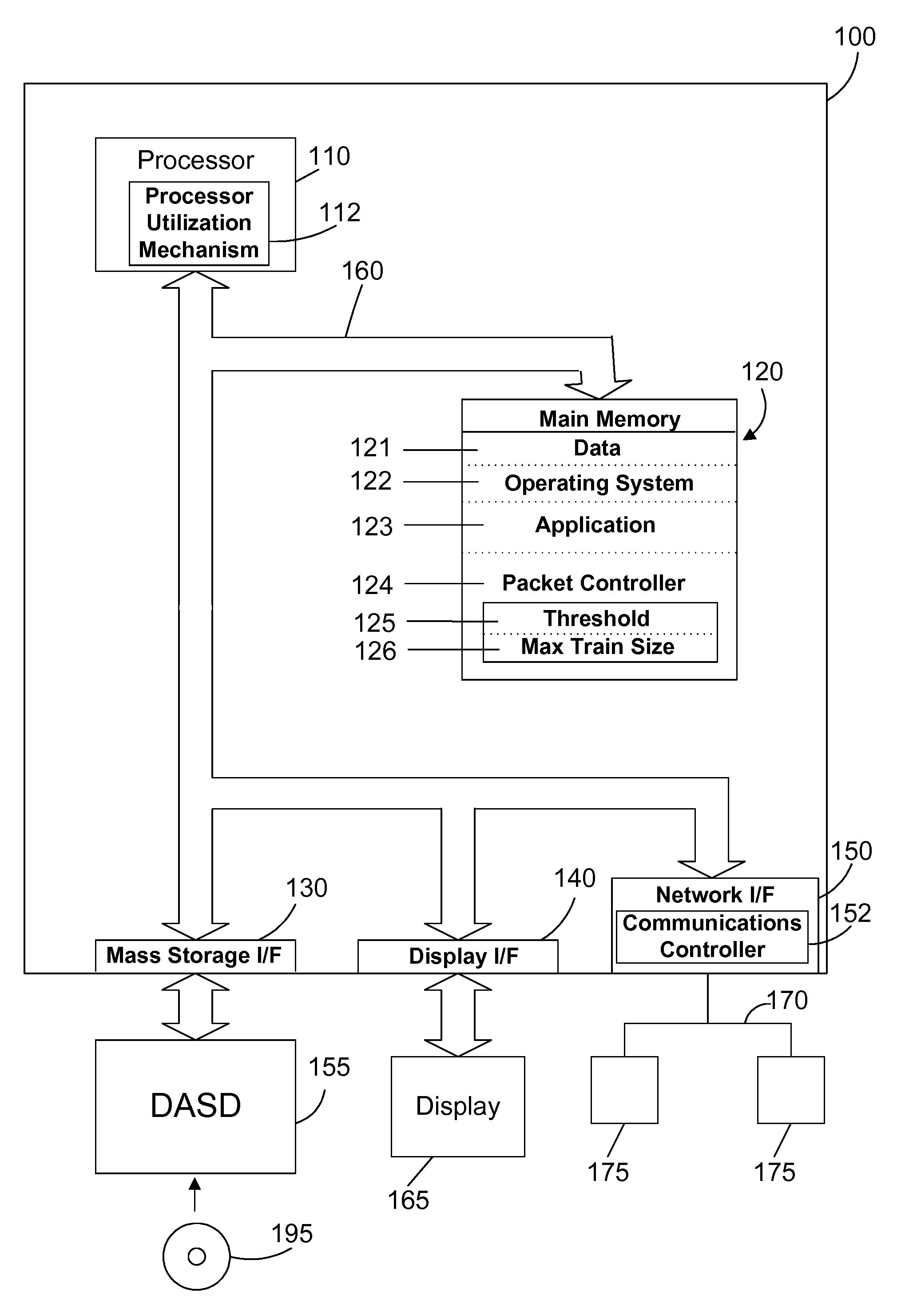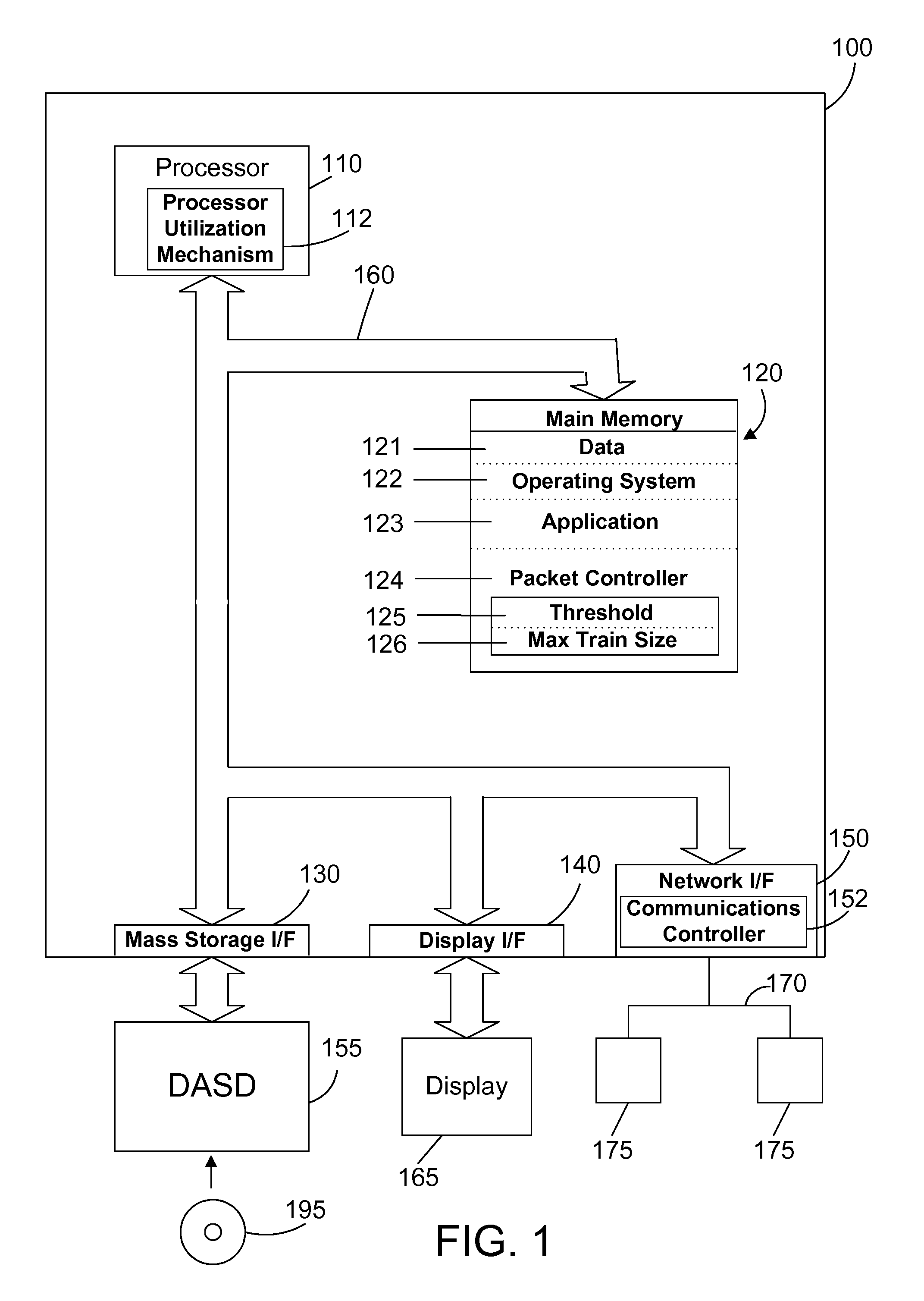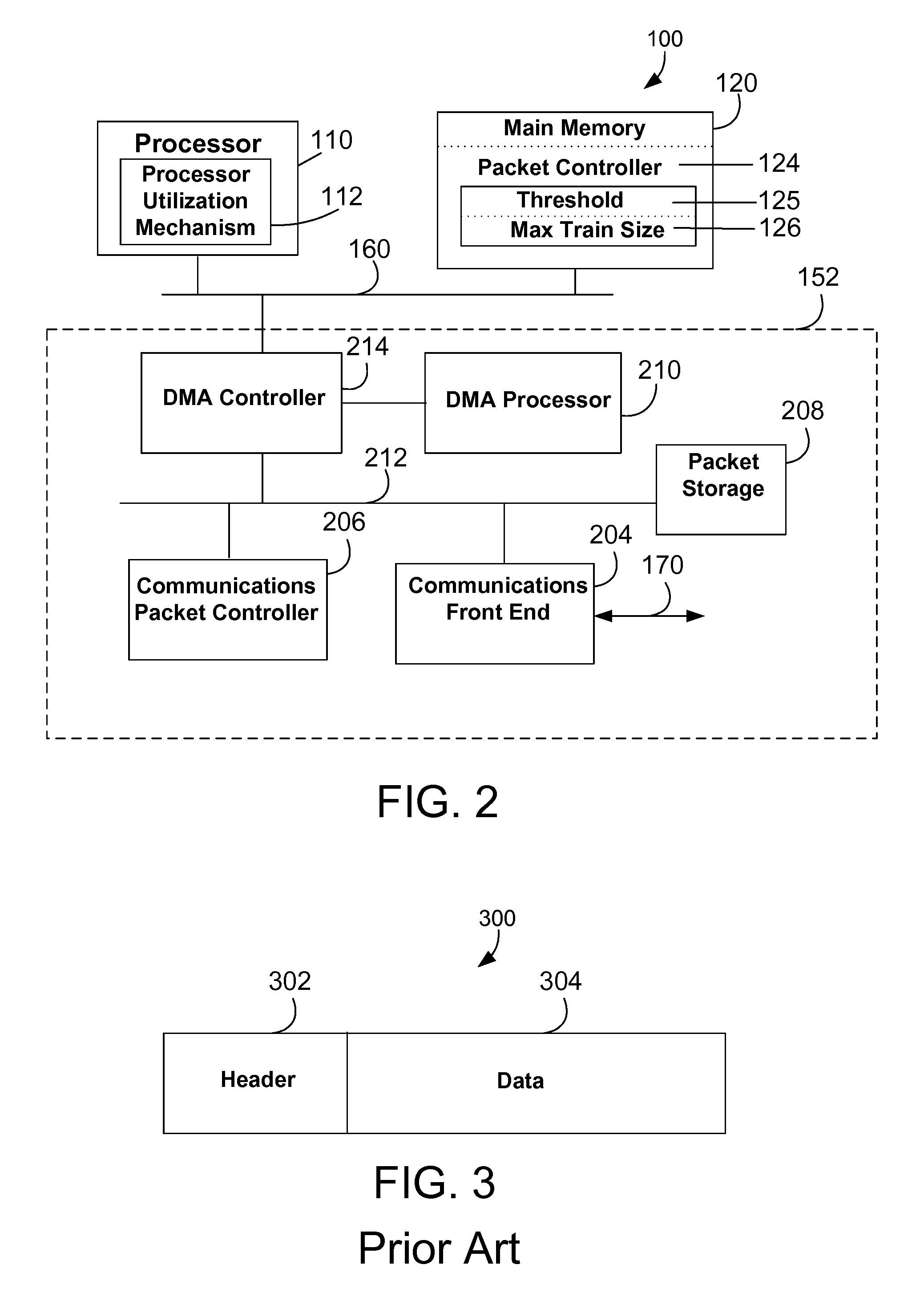Dynamic packet training
a packet training and dynamic technology, applied in the field of data processing and communications, can solve the problems of packets that the node accumulates experience poor performance, additional processing overhead, and packet training is stopped or reduced, so as to reduce the processing load, increase data throughput, and reduce the effect of processing tim
- Summary
- Abstract
- Description
- Claims
- Application Information
AI Technical Summary
Benefits of technology
Problems solved by technology
Method used
Image
Examples
Embodiment Construction
[0019]The present invention relates to dynamic packet training in a data packet network depending on the loading of the CPU. The Overview Section immediately below is intended to provide an introductory explanation of pack training operations and history for individuals who need additional background in this area. Those who are skilled in the art may wish to skip this section and begin with the Detailed Description section instead.
[0020]Overview
[0021]Computer networks typically have multiple nodes connected by communications links, such as telephone networks. Each node typically includes a processing element, which processes data, and a communications-control unit, which controls the transmission and reception of data in the network across the communications link. The processing element can include one or more processors and memory.
[0022]Nodes communicate with each other using packets, which are the basic units of information transfer. A packet contains data surrounded by control an...
PUM
 Login to View More
Login to View More Abstract
Description
Claims
Application Information
 Login to View More
Login to View More - R&D
- Intellectual Property
- Life Sciences
- Materials
- Tech Scout
- Unparalleled Data Quality
- Higher Quality Content
- 60% Fewer Hallucinations
Browse by: Latest US Patents, China's latest patents, Technical Efficacy Thesaurus, Application Domain, Technology Topic, Popular Technical Reports.
© 2025 PatSnap. All rights reserved.Legal|Privacy policy|Modern Slavery Act Transparency Statement|Sitemap|About US| Contact US: help@patsnap.com



